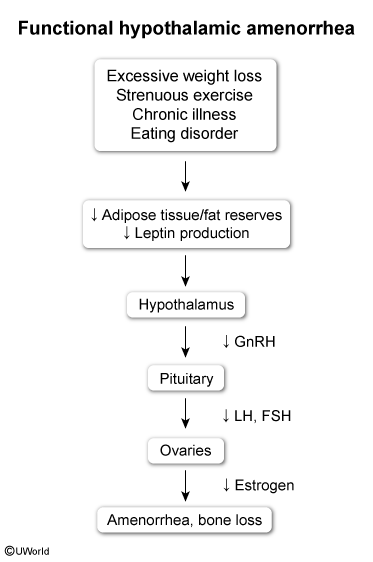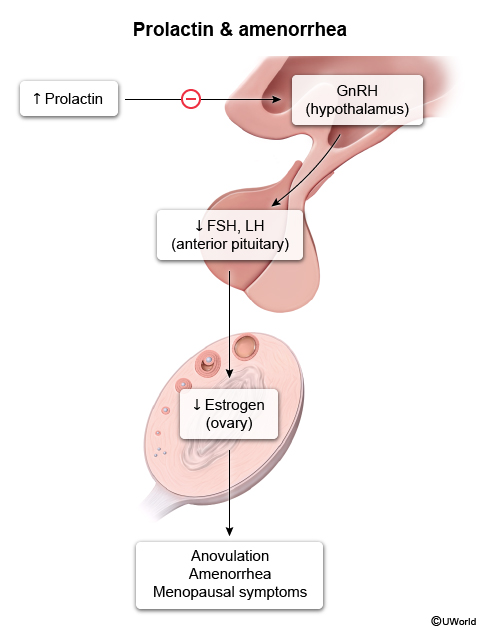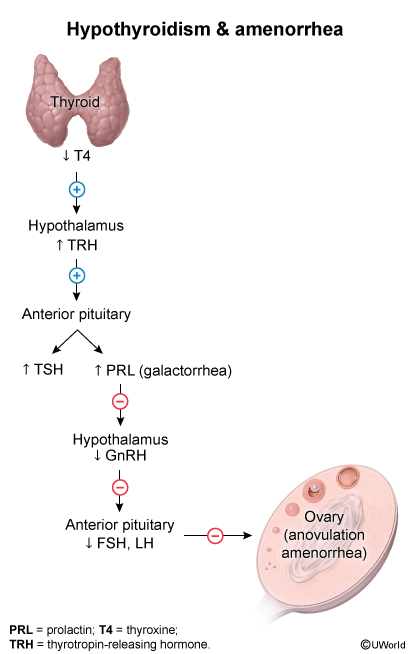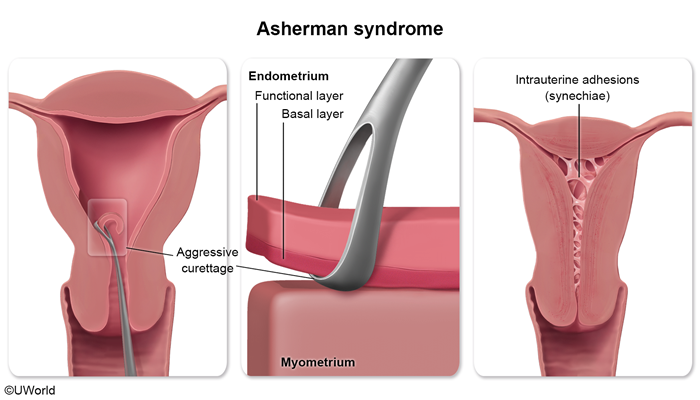Evaluation Of Secondary Amenorrhea
Article Sections
Introduction
Secondary amenorrhea is defined as the absence of menses for ≥3 months in women with previously regular menses OR ≥6 months in women with previously irregular menses. There are various etiologies of secondary amenorrhea that are evaluated in a systematic manner.
This article focuses on causes and basic evaluation of secondary amenorrhea; additional information of the various etiologies can be found in separate articles.
Causes
Pregnancy is the most common cause of secondary amenorrhea and should be evaluated for all patients of reproductive age regardless if they are on contraception or claim to not be sexually active.
Hypothalamic causes- Functional hypothalamic amenorrhea (Figure 1).
- Hypothalamic tumors.
- Systemic illnesses.
In hypothalamic disorders, impaired gonadotropin-releasing hormone (GnRH) secretion causes inappropriate FSH and LH secretion from the anterior pituitary gland, which then leads to underproduction of estrogen and progesterone by the ovaries and results in a failure to menstruate.
Continue Learning with UWorld
Get the full Evaluation Of Secondary Amenorrhea article plus rich visuals, real-world cases, and in-depth insights from medical experts, all available through the UWorld Medical Library.
Figures



